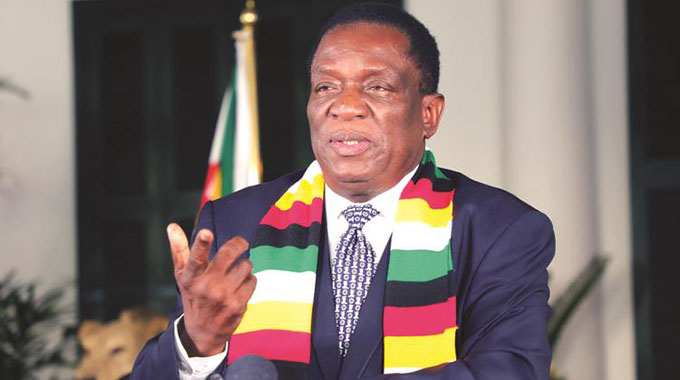
Herald Reporter
President Mnangagwa is today expected to launch the Presidential Livestock Scheme at Cleveland Range in Harare to support livestock farmers.
Speaking at a post-Cabinet briefing yesterday, Information, Publicity and Broadcasting Services Minister Monica Mutsvangwa said the President would distribute piglets to farmers, colleges, universities and other institutions, war veterans, youths and women groups.
This comes at a time the Government is making efforts to grow the livestock sub-sector, which contributes up to 18 percent of the Gross Domestic Product. The sub-sector has been burdened by macroeconomic challenges and diseases such as tuta absoluta and theileriosis (January disease) in cattle.
In June 2018, President Mnangagwa launched the Command Livestock programme at Gwanda Showground, to cater mainly for Matabeleland, where he handed over 1 660 heifers to 151 beneficiaries from Matabeleland South’s seven districts with $10 million being channelled towards the scheme to empower communities in Matabeleland North and South by boosting their herds.
Cabinet also approved a 30 percent incentive to farmers who deliver maize to the Grain Marketing Board early. The incentive is over and above the recently announced maize producer price of $12 329, 72 per tonne for the 2020/2021 marketing season.
Agriculture remains a key component in Zimbabwe’s economic development, as it provides food, creates employment and reduces poverty.
According to the Ministry of Lands, Agriculture, Water and Rural Resettlement’s latest national report, agriculture contributes 15-18 percent of Gross Domestic Product, 23 percent of the total formal employment and offers livelihoods to close to 70 percent rural residents, 54 percent of them women.
About 63 percent of industrial raw materials and 60 percent of manufacturing value addition comes from agriculture. In export earnings, agriculture enjoys a 30 percent share. Of the 31 industry clusters in Zimbabwe, 15 rely on agriculture for feedstock.
In addition, a third of the formal labour force is supported by agriculture-related employment. At least 64 percent of agricultural GDP comes from maize (14 percent), tobacco (25 percent) and cotton (25 percent).
Beef and fisheries provide 10 percent, while 24 percent comes from sheep, goats, pigs, poultry and ostriches. Tobacco, cotton, sugar, horticulture, tea and bananas jointly account for 40 percent of national exports value.
Agriculture, therefore, is crucial in economic development, human capital growth and guaranteeing of national food security.
